Canine Bites Piercing: Procedure, Healing, And Jewelry
From piercing to healing, get to know the intricacies of this cutting-edge piercing!
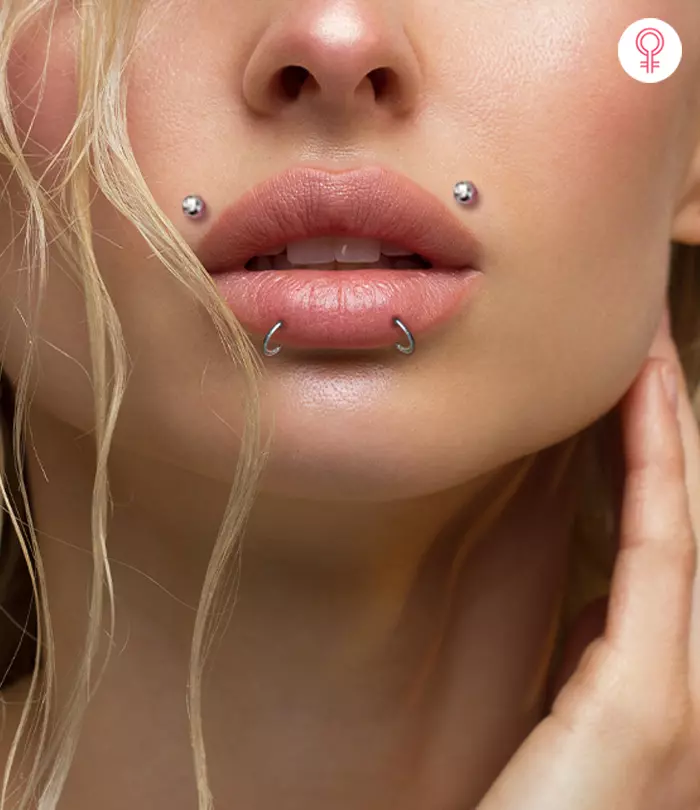
Image: StyleCraze Design Team
Are you thinking about getting a piercing to show off your unique style? Well, look no further! Canine bites piercing is the latest trend that you don’t want to miss out on. This piercing style screams edgy and elegant all at once, making it the perfect choice for anyone looking to make a statement. With four piercings on both sides of your upper and lower lips, you will be sure to turn heads with this stylish look. But wait, before you visit the piercing studio, explore every aspect of this piercing including proper care techniques crucial to ensure a safe and speedy healing process. So, dive into everything you need to know about canine bites piercing and why it has become such a hit among piercing enthusiasts everywhere. Keep scrolling!
 Piercing Guide: Canine Bites Piercing
Piercing Guide: Canine Bites Piercing- Placement: Above the upper lip and below the lower lip
- Best Jewelry: Labret studs or captive bead rings
- Cost: $50 to $100
- Pain Level: Medium
- Healing Time: 8 to 12 weeks
In This Article
Canine Bites Piercing Procedure
Here’s an overview of the piercing procedure:
- Preparation: A professional piercer will thoroughly clean the area around your mouth with an antiseptic solution to reduce the risk of infection before the piercing. They will also mark the precise spots where the piercings will be placed using a surgical marker, ensuring proper alignment and symmetry.
- Numbing: You will be offered a topical numbing agent to minimize discomfort during the piercing process. This step is entirely optional and varies among piercers.
- Piercing: The piercer will carefully puncture the marked spots on your upper and lower lips using a sterile needle specifically designed for oral piercings. The needle will be swiftly inserted through the tissue, creating a clean and precise opening for the jewelry.
- Jewelry Insertion: The piercer will then quickly insert your chosen jewelry and securely fasten it in place to ensure stability and comfort.
- Follow-Up: The piercer may schedule a follow-up appointment to assess the healing progress of your piercings, make any necessary adjustments to your jewelry, and also answer any questions or concerns you may have about the healing process.
Always choose a reputable and experienced piercer who follows strict sterilization and safety protocols to minimize the risk of complications. Also, adhere to your piercer’s aftercare instructions to ensure a successful and comfortable healing experience. If you experience any unusual pain, swelling, or signs of infection during the healing process, promptly contact your piercer or a healthcare professional. Keep reading to know if these piercings would hurt.
Key Takeaways
- Canine bites piercing involves piercing the upper and lower lips near the canine teeth.
- It takes about 6 to 12 weeks to heal. During this time, use saline rinses and avoid irritants, such as hydrogen peroxide, for a smooth recovery.
- Choose from sleek labret studs to edgy horseshoe rings to match your style.
- Opt for high-quality materials like surgical stainless steel or titanium to minimize the risk of complications.
- Get guidance from an experienced piercer and follow their aftercare instructions for a safe piercing experience.
Canine Bites Piercing Pain Level
View this post on Instagram
The pain level experienced during canine bites piercing varies, as pain tolerance differs among individuals, but it usually falls around 5 on the pain scale of 1-10. Here are some factors that can influence it:
- Individual Pain Tolerance: Everyone’s pain threshold is different, so what feels painful to one person may be more tolerable for another. If you have had other piercings or oral procedures in the past, you may have an idea of your pain tolerance level.
Lola Loomerez, a blogger, shared her experience completing her canine bites in her vlog. About the top two piercings, she said, “The healing process is a lot different than it was from my bottom lip. There are trade-offs if I go to, like, do something…like talking or eating or whatever and it will catch the bottom of my teeth and then I’ll have to panic, carefully pull it back up (i).” She added, “It didn’t really hurt to get pierced, it was different than getting these pierced only because, instead of pulling clamp down and going through the inside, it went through the outside. So it was different for me, my eyes did water a little bit but that wasn’t anything major.”
- Piercing Location: Canine bites piercings involve piercing the upper and lower lips on either side of the canine teeth. The proximity to nerve endings and the thickness of the tissue in this area can contribute to the level of discomfort experienced during the piercing process.
- Piercer’s Professional Skill: The expertise and technique of the piercer performing the procedure can also influence the pain level. A skilled and experienced piercer will use proper techniques to minimize the discomfort and ensure a smooth and precise piercing process.
- Use Of Numbing Agents: Some piercers may offer topical numbing agents to help minimize pain and discomfort during the piercing procedure. These numbing agents can temporarily dull the sensation in the pierced area, making the experience more comfortable for some individuals.
While some discomfort is typical during the piercing process, it is usually manageable and brief. If you’re concerned about pain, you can discuss your options with your piercer, like the use of numbing agents or taking over-the-counter pain relievers before the appointment. Remember to communicate openly with your piercer about any concerns or preferences you have regarding pain management during the piercing process. If you are wondering how long your canines may take to heal completely, move to the next section on canine bites and healing.
Canine Bites Piercing Healing Time
View this post on Instagram
Each person’s body heals at its own pace. Your overall health, immunity, and lifestyle habits can affect how quickly the piercing site heals. Though individual experiences may vary, the usual healing time for canine bite lip piercing spans between 8 to 12 weeks (1). This period is crucial for the body to adapt to the new piercing and for the tissue to fully close around the jewelry.
Remember proper piercing technique that includes using sterile equipment and following hygiene protocols, can promote faster healing and reduce the risk of complications. So we recommend thorough research before opting for a session and getting it done by a professional piercer.
Proper aftercare plays a significant role in facilitating the healing process. Here are some pointers that might be helpful:
- Ensure to clean your piercing by rinsing it with saline solution.
- Dodge irritating foods to avoid inflammation, and embrace best practices to maintain your oral hygiene.
- Avoid using products containing harsh chemicals, such as hydrogen peroxide, to prevent irritation.
- Avoid smoking, alcohol consumption, and oral contact with unclean objects during the healing period to prevent infection and promote faster healing.
While some swelling, tenderness, and clear or yellowish discharge around the piercing site are normal during the initial stages of healing, these are just signs that your body’s healing mechanisms are kicking into high gear. However, don’t hesitate to call in your piercer or healthcare ally if you notice excessive pain, inflammation, or any signs of infection such as discharge that is thick-textured and usually brown or yellow and is accompanied by a foul smell.
 Trivia
TriviaApart from looking out for the healing of your fresh piercing, it is important to also know how to clean the piercing. The following section reveals the steps you can follow to keep your piercings clean and safe.
How To Clean Your Canine Bites Piercing

Here’s a simple step-by-step guide on cleaning your canine bites piercing:
- Wash your hands thoroughly with soap and warm water before touching your piercing.
- Prepare a saline solution by mixing 1/4 teaspoon of non-iodized sea salt with 8 ounces of warm distilled or previously boiled water. Let it cool to room temperature.
- Gently rinse your mouth with the saline solution for about 30 seconds, making sure to swish it around the piercing area.
- After rinsing, carefully rinse your mouth with plain water to remove any residual saline solution.
- Use a disposable paper towel or cotton swab to gently clean around the piercing site, removing any crust or debris. Avoid using cotton balls, as they can leave fibers behind.
- Repeat this cleaning process 2-3 times a day, especially after meals or snacks.
- Avoid touching your piercing with unwashed hands or playing with the jewelry to prevent irritation or infection.
- Be mindful of what you eat and drink during the healing process, avoiding spicy, acidic, or hard foods that may irritate the piercing.
Having been acquainted with the cleaning process, the following section will reveal the estimate for getting these unique piercings done at a professional studio. Check it out
Canine Bites Piercing Cost
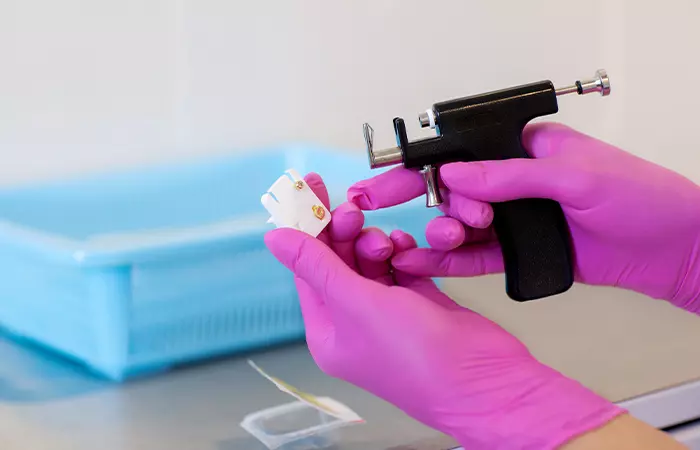
The cost of canine bites piercing varies based on several factors, including the piercing studio’s location, reputation, and expertise, as well as the quality of jewelry chosen for the procedure. On average, you can expect to pay anywhere from $50 to $100 per piercing, totaling $100 to $200 for a complete set of canine bite lip piercings.
Keep in mind that this estimate may not include the cost of initial jewelry, which can range from $10 to $50 or more per piece, depending on the material and design. While it may seem like a significant investment, remember that prioritizing a reputable piercer and high-quality jewelry ensures a safe and satisfying piercing experience, making it a worthwhile investment in your unique style and self-expression.
 Quick Tip
Quick TipNow, let’s delve into the ways you can beautify these piercings with the right jewelry, being mindful of the material used for canines. Keep reading!
Type Of Jewelry And Material Used For Canine Bites Piercing
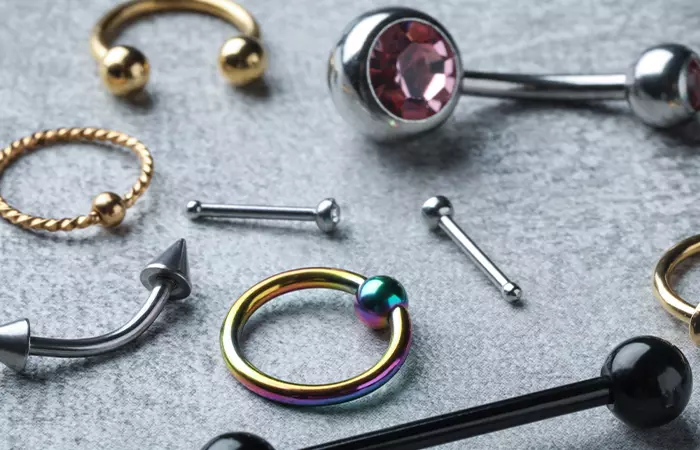
Choosing the right jewelry and material is essential for both aesthetic appeal and comfort. Here’s a comprehensive overview of the types of jewelry and materials commonly used for canine bites piercing!
Jewelry Options
- Labret Studs: These are a popular choice for this piercing because of their versatility, stability, and comfort. These studs consist of a flat backplate and a decorative top, which can be customized with various designs, shapes, and gemstones.
- Captive Bead Rings (CBRs): Captive bead rings feature a hoop with a removable bead or captive ball that snaps into place, creating a seamless look. CBRs come in various sizes and designs, allowing for versatility in styling canine bites piercings. They also provide flexibility and are easy to clean, making them a practical option for oral piercings.
- Horseshoe Rings: Horseshoe rings, also known as circular barbells, resemble the shape of a horseshoe with removable balls or cones at each end. These rings offer a unique and edgy aesthetic for this type of piercing, allowing for easy customization and versatility in styling.
- Flat Back Labret Rings: Flat back labret rings feature a flat backplate and a removable top, similar to traditional labret studs. However, the backplate is flat to minimize irritation and discomfort against the gums or teeth, making them a practical option for oral piercings while maintaining a sleek appearance.
 Did You Know?
Did You Know?Material Options
- Surgical Stainless Steel: Surgical-grade stainless steel is a popular choice for piercing jewelry due to its durability, hypoallergenic properties, and corrosion resistance (2). It makes a suitable option for individuals with sensitive skin or nickel allergies.
- Titanium: Titanium is a lightweight and biocompatible material commonly used in piercing jewelry. It is hypoallergenic, resistant to corrosion, and ideal for individuals with metal sensitivities, especially nickel (2).
- Bioplast: Bioplast is a flexible material suitable for oral piercings. It’s soft, comfortable, and less likely to cause irritation or damage to the gums and teeth. However, Bioplast attracts more bacteria on the surface (3). Therefore, following proper oral care is essential to minimize the risk of infection.
- Acrylic: Acrylic jewelry is lightweight and available in a wide range of colors and designs, making it popular for temporary or decorative purposes. However, it is essential to choose high-quality acrylic jewelry to minimize the risk of irritation or degradation over time.
When selecting jewelry for canine bites piercing, it’s essential to consult a professional piercer who can recommend the most suitable options based on your individual anatomy, style preferences, and lifestyle factors. Also, invest in high-quality, hypoallergenic jewelry and practice proper aftercare for a safe yet stylish piercing experience.
Excited to get the piercing now? But hold on, you should also be aware of the side effects. Check out the following section to know more about it.
Side Effects Of Canine Bites Piercing

Canine bites piercing, like any other body modification, can lead to some side effects. These include:
- Swelling And Redness: It is usual for the pierced area to swell and become red immediately after the procedure (4). This swelling usually subsides within a few days to a week.
- Tenderness And Discomfort: The pierced area may feel tender or sore, especially during the first few days after getting the piercing. This discomfort typically diminishes as the healing progresses.
- Difficulty Eating And Speaking: The presence of jewelry in the mouth can temporarily affect eating and speaking since the piercing is located on the corners of the lips, near the tongue.
- Risk Of Infection: There is always a risk of infection with canine bites piercing, just like any other piercing (5). Signs of infection may include increased pain, swelling, redness, warmth, and thick, yellowish, or brownish pus discharge with a foul smell from the piercing site. Prompt treatment is essential if infection occurs.
- Allergic Reactions: Some individuals may experience allergic reactions to the materials used in the jewelry, like nickel or certain metals. Symptoms may include itching, redness, or irritation around the piercing site.
- Gum And Tooth Damage: The piercing may lead to gum recession, tooth enamel erosion, or damage to dental work, such as veneers if the jewelry comes into contact with the teeth or gums (6).
- Migration Or Rejection: The body, sometimes, rejects the piercing or the jewelry migrates from its initial placement, leading to changes in the appearance of the piercing or discomfort (5).
- Scarring: While scarring is usually minimal with proper care, some individuals may develop hypertrophic scars or keloids at the piercing site (5).
You can avoid the above-mentioned side effects by taking appropriate measures like choosing a reputable piercer, following proper aftercare instructions, and monitoring the piercing for any signs of complications. If you experience any concerning symptoms or have questions about your piercing, always consult your piercer or a healthcare professional, as they may help you with personalized advice. To minimize complications and side effects, your piercer may also suggest you do the piercings in two sessions, allowing time for healing in between. This reduces the toll on your immune system and the risk of infections.
Canine bites piercings are beautiful and aesthetically pleasing but they need extra care and attention. They can be prone to infection since these piercings will be exposed to saliva, food, etc. Therefore, following diligent aftercare and maintaining oral hygiene is essential. Moreover, they will adorn a part of the body that is almost always visible. Hence, consider your style and preferences while selecting jewelry for your canine bites. Whether you opt for sleek studs or bold rings, choose jewelry made from high-quality materials to minimize irritation and promote healing. Lastly, listen to your body throughout the healing process. If you experience any unusual pain, swelling, or signs of infection, don’t hesitate to seek advice from your piercer or a healthcare professional. Embrace your piercing with confidence and let it be a reflection of your unique personality.
Frequently Asked Questions
What factors should I consider before getting canine bites piercings?
Consider factors like pain tolerance, commitment to aftercare, and the reputation of your chosen piercer before getting canine bites piercings. Also, think about the placement, healing time, and how the piercings may fit into your lifestyle for a safe and satisfying experience. You may also consider spreading the piercings over two sessions to maximize healing.
How do I choose a reputable piercer for canine bites piercings?
When choosing a reputable piercer for canine bites piercings, prioritize those with positive reviews, proper certification, and a clean, professional studio. Also, assess their portfolio to ensure they have experience with similar piercings and schedule a consultation to gauge their communication and expertise.
What is the likelihood of scarring with canine bites piercings?
The likelihood of scarring with canine bites piercings is moderate, but proper aftercare and attention to hygiene can help minimize it.
Can I stretch canine bites piercings like other lip piercings?
Yes, you can stretch canine bites piercings like other lip piercings, but it requires caution and gradual stretching to prevent complications like tearing or thinning of the tissue. Consulting a professional piercer is essential for guidance and proper technique.
Can I wear makeup or lip products with canine bites piercings?
Yes, you can wear makeup and lip products with canine bites piercings, but it is essential to avoid applying them while the piercing is healing whether on or around the piercing area to prevent irritation or contamination.
Are you thinking about getting your canines done? Check out this video for an insightful guide on what you should expect from a canine bites piercing session.
Personal Experience: Source
StyleCraze's articles are interwoven with authentic personal narratives that provide depth and resonance to our content. Below are the sources of the personal accounts referenced in this article.
(i) Getting My Angel Bites/Making Canine Biteshttps://www.youtube.com/watch?v=Ng_jMiLcqlY
References
Articles on StyleCraze are backed by verified information from peer-reviewed and academic research papers, reputed organizations, research institutions, and medical associations to ensure accuracy and relevance. Read our editorial policy to learn more.
- Body Piercing
https://youngwomenshealth.org/guides/body-piercing/ - Jewelry For Initial Piercings
https://safepiercing.org/jewelry-for-initial-piercings/ - In Vitro Adherence of Oral Bacteria to Different Types of Tongue Piercings
https://www.ncbi.nlm.nih.gov/pmc/articles/PMC5048054/ - Body Piercing Infections
https://www.ncbi.nlm.nih.gov/books/NBK537336/ - Complications of body piercing
https://pubmed.ncbi.nlm.nih.gov/16342832/ - Dental and periodontal complications of lip and tongue piercing: prevalence and influencing factors
https://pubmed.ncbi.nlm.nih.gov/22369561/
Read full bio of Eve Phillips
Read full bio of Vaishali Sinha
Read full bio of Asmita De
Read full bio of Gracia Odile







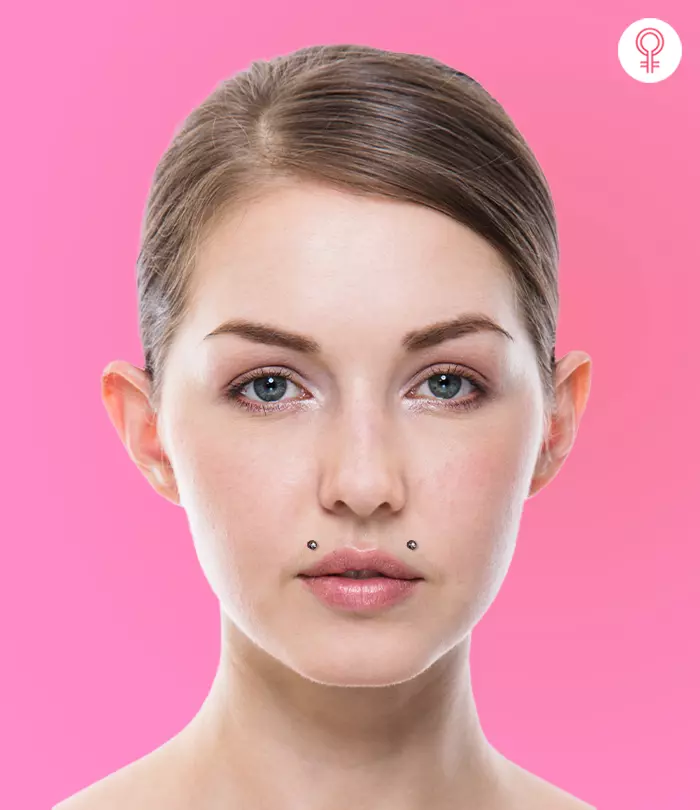

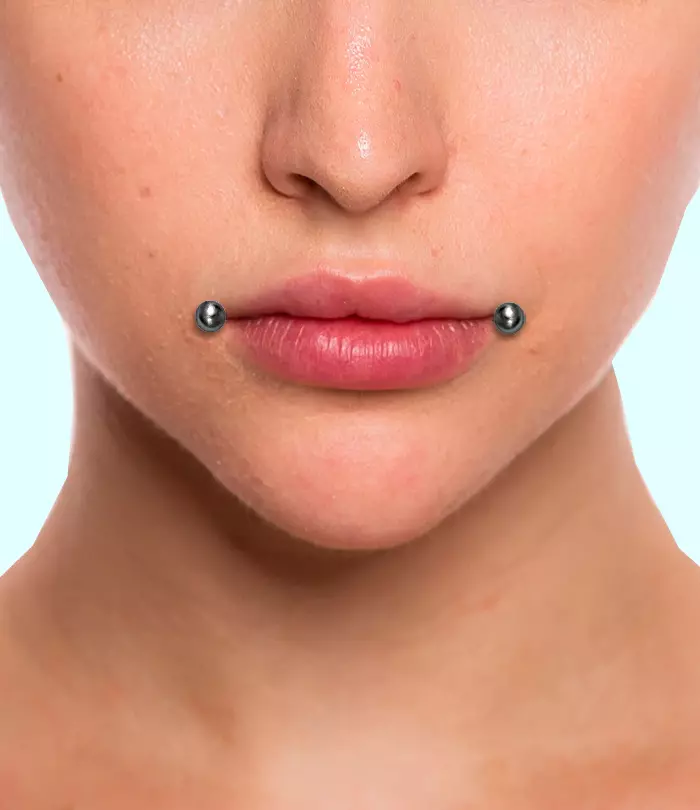




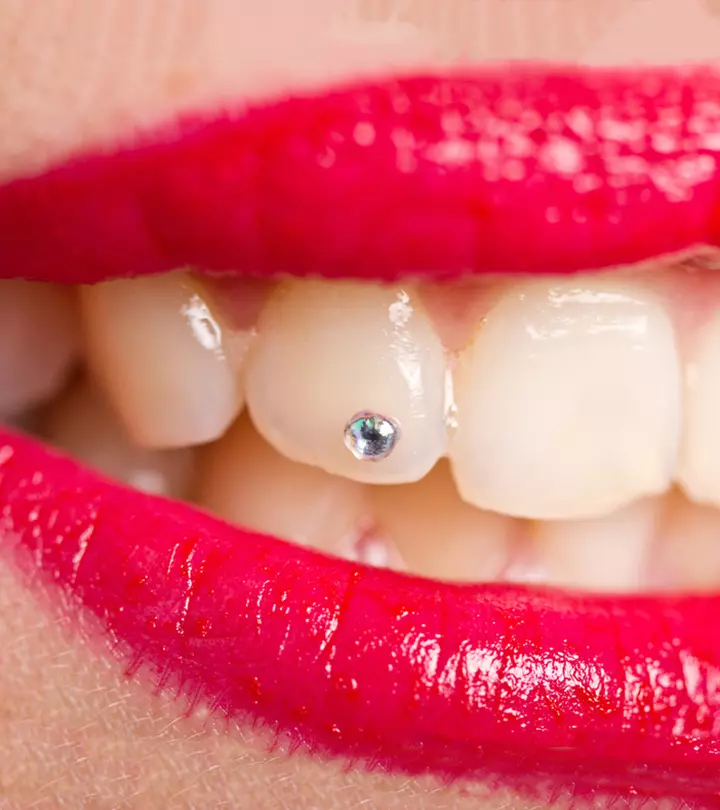
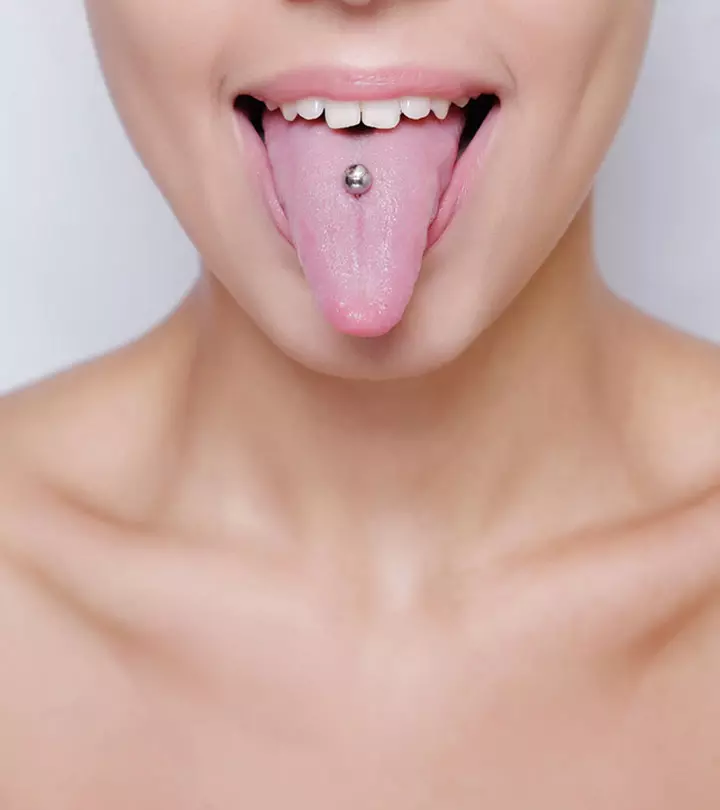



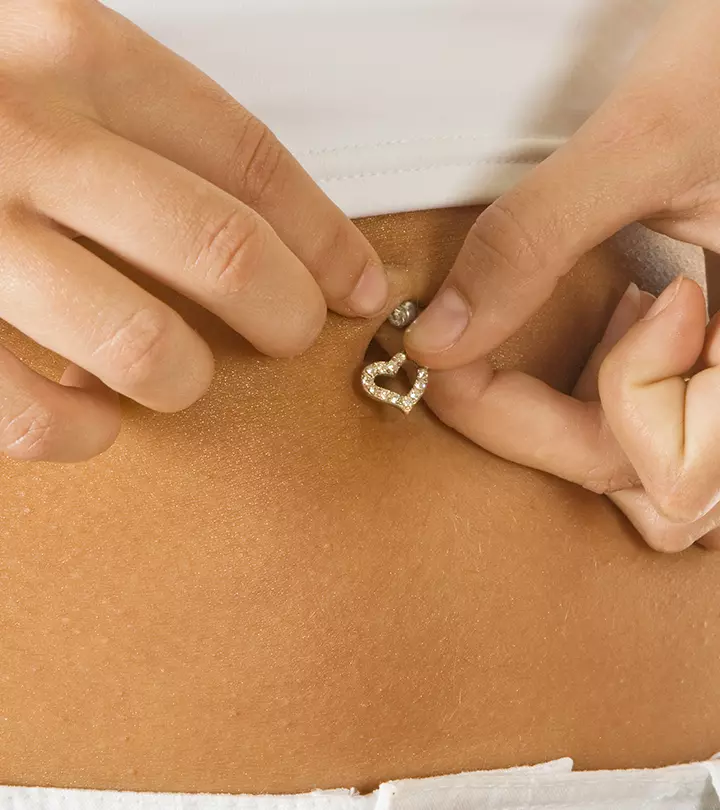
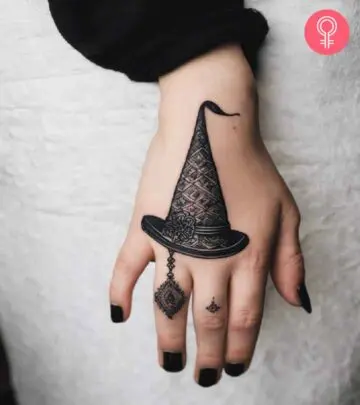
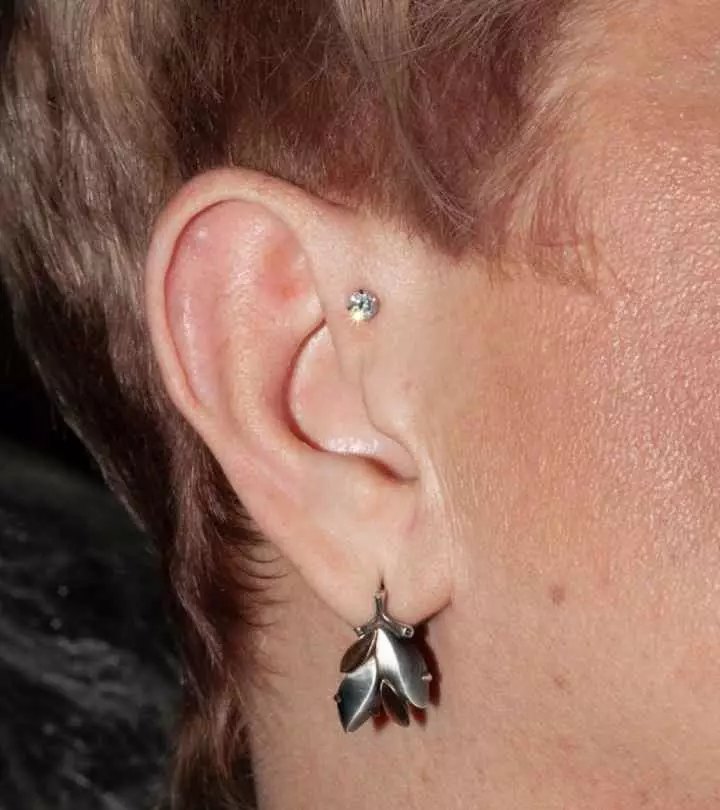

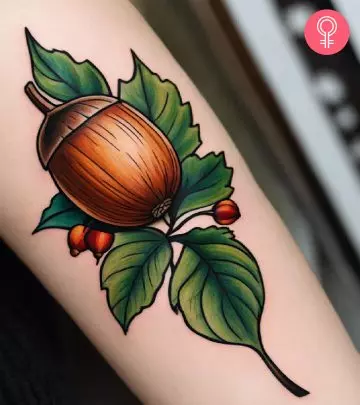
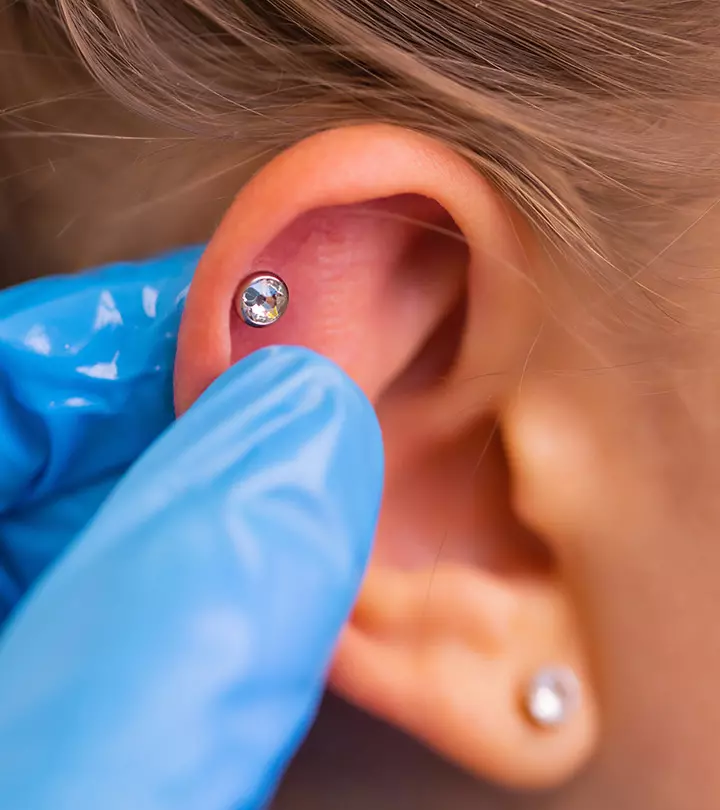
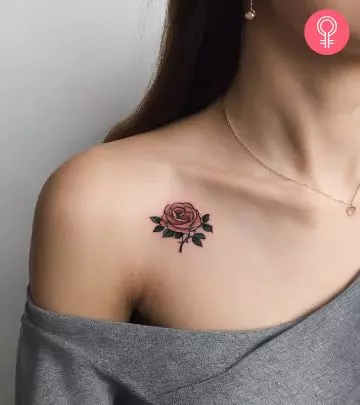

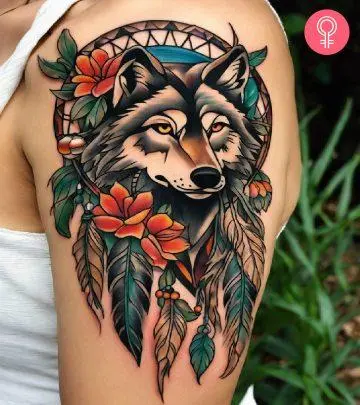
Community Experiences
Join the conversation and become a part of our empowering community! Share your stories, experiences, and insights to connect with other beauty, lifestyle, and health enthusiasts.